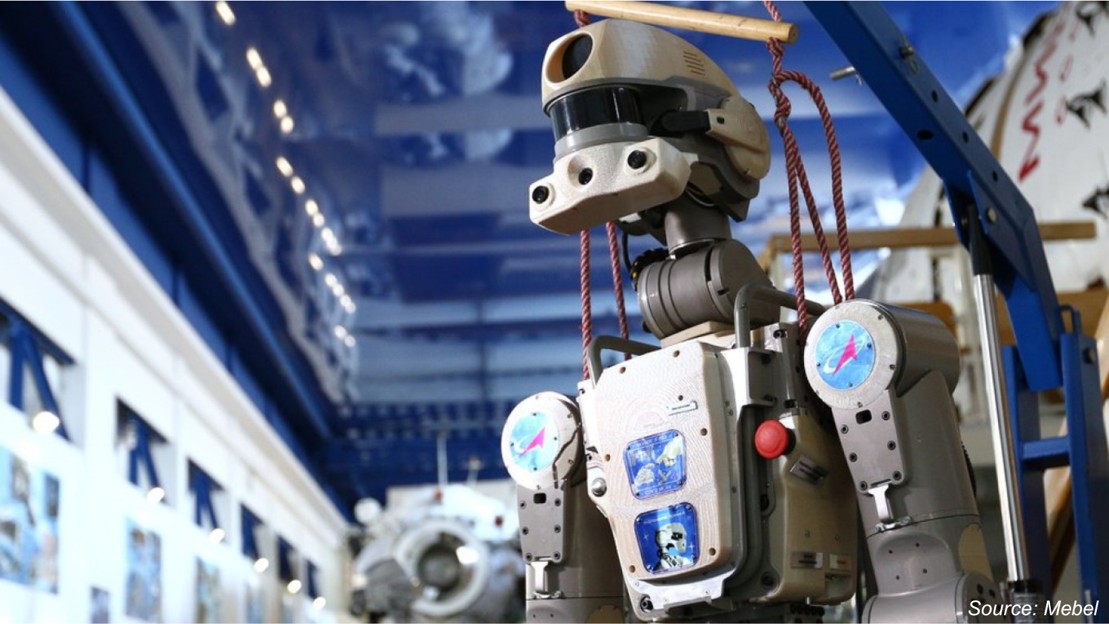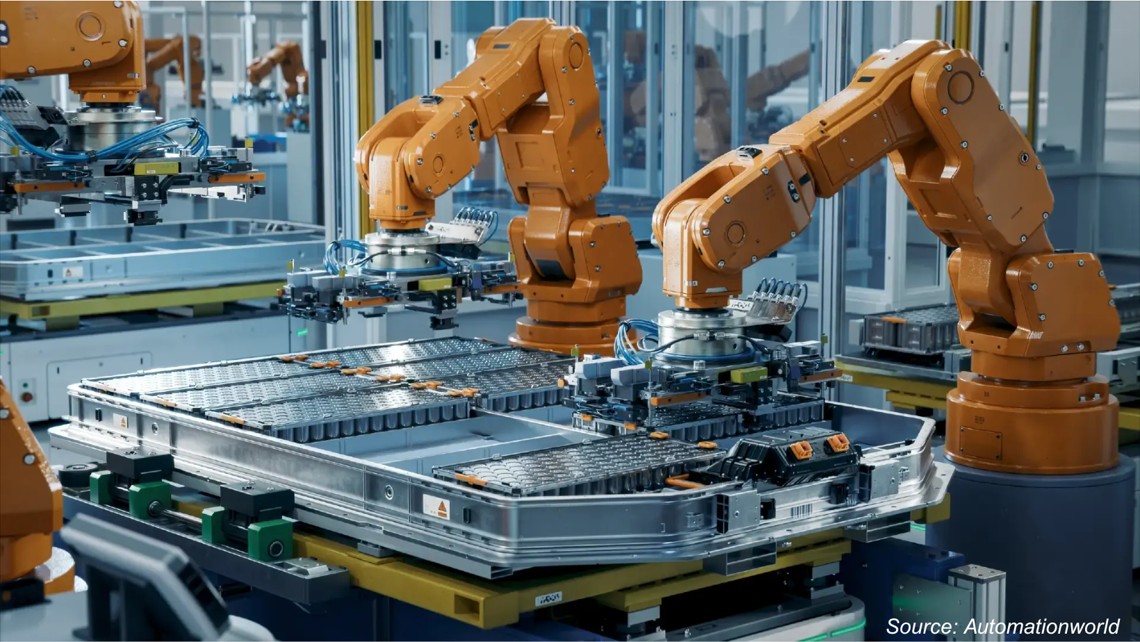
Warehouse Automation Market by Component (Hardware, Software, and Services), by Automation Level (Semi-Automated, Highly Automated, and Fully Automated), by Application (Picking & Packing, Storage & Retrieval, Transportation & Distribution, Sorting & Handling, and Inventory Management), by Industrial Vertical (E-commerce & Retail, and Others), and by Deployment Model (On-Premise or Private Cloud, Public Cloud or SaaS, and Hybrid) – Global Opportunity Analysis and Industry Forecast 2024–2030
Industry: ICT & Media | Publish Date: 17-Jul-2025 | No of Pages: 627 | No. of Tables: 401 | No. of Figures: 326 | Format: PDF | Report Code : IC443
Market Overview
The global Warehouse Automation Market size was valued at USD 23.84 billion in 2023, and is projected to reach USD 54.60 billion by 2030 at a CAGR of 11.7% from 2023 to 2030.
Warehouse automation refers to the use of technology and machinery to optimize processes & operations such as material handling, picking & packing, and inventory management in a warehouse. It includes use of automated systems such as conveyor systems, automated storage & retrieval systems, robotic picking & packing systems, automated guided vehicles, and robots. These systems are designed to automate tasks such as receiving, storage, retrieval, loading & unloading, and shipping of goods. Warehouse automation solutions are used in a variety of industries including retail, e-commerce, manufacturing, and logistics.
One of the advantages of implementing warehouse automation is that it reduces reliance on manual labor, allowing workers to concentrate on more critical activities. It also enhances safety by automating dangerous tasks such as heavy lifting. In addition, another advantage is real-time inventory tracking, which facilitates informed decision-making for businesses. Moreover, warehouse automation helps organizations optimize their operations and enhance their ability to compete in the market.
Growing Use of Intelligent Robotics to Improve Operational Efficiency
Warehouses are increasingly adopting AI-integrated robotics to handle repetitive and labor-intensive tasks. These systems enhance accuracy, speed up processes, and reduce the need for manual intervention. With the ability to work continuously and adapt to dynamic warehouse environments, intelligent robots are becoming a core element of modern fulfillment operations.
E-Commerce Growth Necessitating Faster and Scalable Fulfillment
The sustained rise of e-commerce is driving demand for fast, accurate, and scalable warehouse operations. Automation helps companies manage higher order volumes, reduce delivery times, and maintain inventory accuracy. As online shopping becomes more prevalent, automated solutions are essential for meeting customer expectations and maintaining competitiveness.
High Initial Investment and Complex Integration Challenges
Despite the long-term benefits, the upfront cost of implementing warehouse automation remains a major barrier for many organizations. The expenses involved in procuring hardware, customizing software, and training staff can be substantial—especially for small to mid-sized businesses. Additionally, integrating automated systems into existing warehouse infrastructure can be complex, requiring careful planning and potential downtime. These challenges often delay decision-making or limit the scope of automation projects, particularly in regions with limited access to technical expertise or financial resources.
Emergence of AI-Driven Predictive Analytics and Autonomous Decision-Making
As warehouses generate increasing volumes of real-time data, the integration of AI-powered predictive analytics is opening new opportunities. These tools can forecast demand, optimize inventory placement, and anticipate maintenance needs for automated equipment—leading to more proactive and efficient operations. Combined with machine learning, automation systems are evolving to make autonomous decisions, such as rerouting picking tasks or adjusting workflows based on changing order patterns. This shift toward intelligent automation not only enhances agility and responsiveness but also supports the broader transition to fully adaptive, self-optimizing warehouses.
North America Holds a Major Share in the Warehouse Automation Market
North America holds the largest share in the warehouse automation market, and is expected to continue its dominance during the forecast period. This is attributed to factors such as advancements in technology, need for improved efficiency & productivity, along with increasing availability and affordability of automated systems across this region.
Globally, the U.S. ranked 7th in robot density in the car industry in 2021 as reported by the International Federation of Robotics. In the U.S. automotive industry, 1,287 robots were installed per 10,000 employees in 2021. The automotive industry utilizes robots in various applications while manufacturing vehicles including assembly and product handling in warehouses, which, in turn, drives growth of the warehouse automation market.
Moreover, presence of regional robot manufacturers such as Destaco, Fetch Robotics Inc., Applied Robotics Inc., and RobotWorx, Inc. that are adopting product launch as their key developmental strategy that further contributes toward growth of the market in this region. For instance, in January 2021, Fetch Robotics launched its new PalletTransport1500, an autonomous mobile robot (AMR) designed specifically to replace forklift trucks in warehouses. The new robot has the capability to pick up and drop off loaded pallets up to 1136 kg, as well as to eliminate humans from the pallet movement equation.
Asia-Pacific is Growing Steadily in the Warehouse Automation Market
Asia-Pacific is expected to show a steady rise in the warehouse automation market share, owing to various government initiatives to implement automation and robotics in this region. Countries such as South Korea, India, and Thailand are integrating robots with human workers and investing in automation to improve their warehouse & logistics operations. Increase in emphasis on automation across these countries propels growth of the industry.
For instance, in January 2022, the government of South Korea announced that it would permit robots on public roads for delivery services in 2023. This initiative is expected to significantly enhance its logistics and warehouse operations, leading to increase in adoption of automation technologies.
Moreover, there is a rise in demand for warehouse automation systems in Japan, which is the world's top exporter of robots. Its leading position in robot manufacturing contributes toward growth of the warehouse automation market. According to the International Federation of Robotics (IFR), there were 4,720 industrial robot installations in 2021, indicating a rise in adoption of automation technologies in manufacturing and logistics sectors in Japan.
Competitive Landscape
The warehouse automation industry trends include various market players such as Daifuku Co., Ltd., KION Group AG, Vanderlande Industries B.V., SSI SCHAEFER Group, TGW Logistics Group, Honeywell International Inc., KUKA AG, ABB Ltd., Omron Corporation, Yaskawa Electric Corp., Schneider Electric SE, Toshiba Infrastructure Systems And Solutions Corp., KNAPP AG, Jungheinrich AG, Crown Equipment Corp., FANUC Corp., Kawasaki Heavy Industries, Korber Supply Chain, Fortna, Inc., Rockwell Automation, Inc. These market players are adopting several strategies such as product launches, partnerships, and business expansions across various regions to maintain their dominance in the market.
For instance, in April 2025, Daifuku Co., Ltd. opened a new manufacturing plant in Telangana, India. This facility focuses on producing automated storage and retrieval systems (AS/RS), case sorters, conveyors, and related equipment to meet the rising automation demand in the region.
Moreover, in June 2025, SSI SCHAEFER Group commissioned a 30,000 m² fully automated warehouse for Apotea in Varberg, Sweden. The facility integrates shuttle robots, A-Frame picking systems, pick-by-light stations, and advanced warehouse control software, enabling the processing of over 50,000 orders daily.
Warehouse Automation Market Key Segments
By Component
-
Hardware
-
Automated Storage & Retrieval Systems (AS Or RS)
-
Unit-Load AS/RS
-
Mini-Load AS/RS
-
Vertical Lift Modules (VLMs)
-
Carousel AS/RS
-
-
Conveyors And Sortation
-
Autonomous Mobile Robots (AMRs)
-
Automated Guided Vehicles (AGVs)
-
Robotic Pick-and-Place Or Palletizers
-
Automated Loading Or Unloading Systems
-
Goods-to-Person Stations
-
-
Software
-
Warehouse Management Systems (WMS)
-
Warehouse Control Systems (WCS) / Execution (WES)
-
Inventory Optimization & Slotting Engines
-
Order Management & Orchestration Platforms
-
Robot Fleet Management & Orchestration Software
-
Analytics & Predictive-Maintenance Modules
-
-
Services
-
Consulting And System Design
-
Integration And Implementation
-
Training And Change Management
-
Maintenance, Remote Monitoring & Support
-
Upgrades And Scalability Planning
-
By Automation Level
-
Semi-Automated
-
Highly Automated
-
Fully Automated
By Application
-
Picking & Packing
-
Storage & Retrieval
-
Transportation & Distribution
-
Sorting & Handling
-
Inventory Management
By Industrial Vertical
-
E-commerce & Retail
-
3PL & Fulfillment
-
Automotive And Parts
-
Food & Beverage
-
Pharma And Life Sciences
-
Electronics And High-Tech Manufacturing
-
Apparel And Consumer Goods
-
Aerospace And Defense
-
Other Verticals
By Deployment Model
-
On-Premise Or Private Cloud
-
Public Cloud Or SaaS
-
Hybrid
By Geography
-
North America
-
U.S
-
Canada
-
Mexico
-
-
Europe
-
UK
-
Germany
-
France
-
Italy
-
Spain
-
Denmark
-
Netherlands
-
Finland
-
Sweden
-
Norway
-
Russia
-
Rest of Europe
-
-
Asia-Pacific
-
China
-
Japan
-
India
-
Australia
-
South Korea
-
New Zealand
-
Taiwan
-
Indonesia
-
Singapore
-
Rest of Asia-Pacific
-
-
RoW
-
Latin America
-
Middle East
-
Africa
-
Key Players
-
Daifuku Co., Ltd.
-
KION Group AG
-
Vanderlande Industries B.V.
-
SSI SCHAEFER Group
-
TGW Logistics Group
-
Honeywell International Inc.
-
KUKA AG
-
ABB Ltd.
-
Omron Corporation
-
Yaskawa Electric Corp.
-
Schneider Electric SE
-
Toshiba Infrastructure Systems And Solutions Corp.
-
KNAPP AG
-
Jungheinrich AG
-
Crown Equipment Corp.
-
FANUC Corp.
-
Kawasaki Heavy Industries
-
Korber Supply Chain
-
Fortna, Inc.
-
Rockwell Automation, Inc.
Report Scope and Segmentation
|
Parameters |
Details |
|
Market Size in 2023 |
USD 23.84 Billion |
|
Revenue Forecast in 2030 |
USD 54.60 Billion |
|
Growth Rate |
CAGR of 11.7% from 2024 to 2030 |
|
Analysis Period |
2023–2030 |
|
Base Year Considered |
2023 |
|
Forecast Period |
2024–2030 |
|
Market Size Estimation |
Billion (USD) |
|
Growth Factors |
|
|
Countries Covered |
28 |
|
Companies Profiled |
15 |
|
Market Share |
Available for 10 companies |
|
Customization Scope |
Free customization (equivalent up to 80 analysts working hours) after purchase. Addition or alteration to country, regional & segment scope. |
|
Pricing and Purchase Options |
Avail customized purchase options to meet your exact research needs. |




















 Speak to Our Analyst
Speak to Our Analyst

























